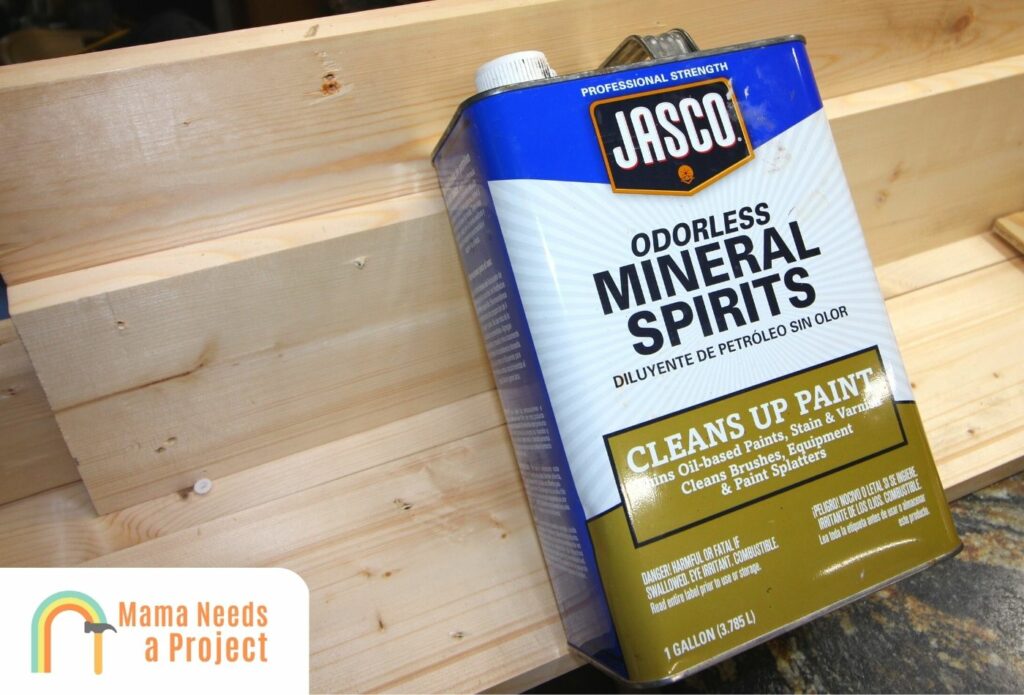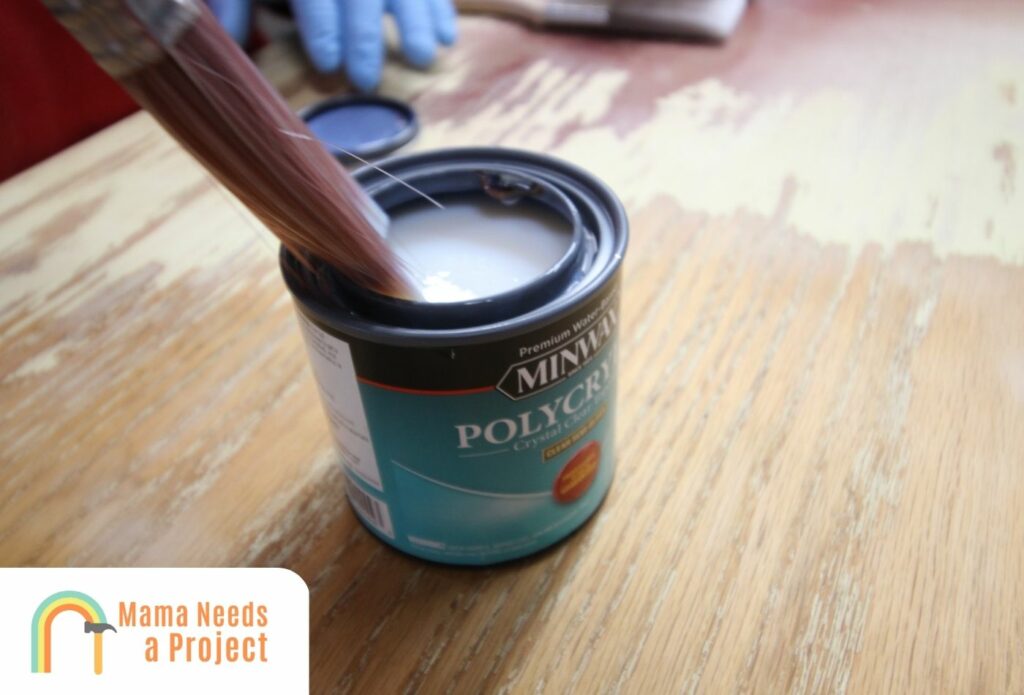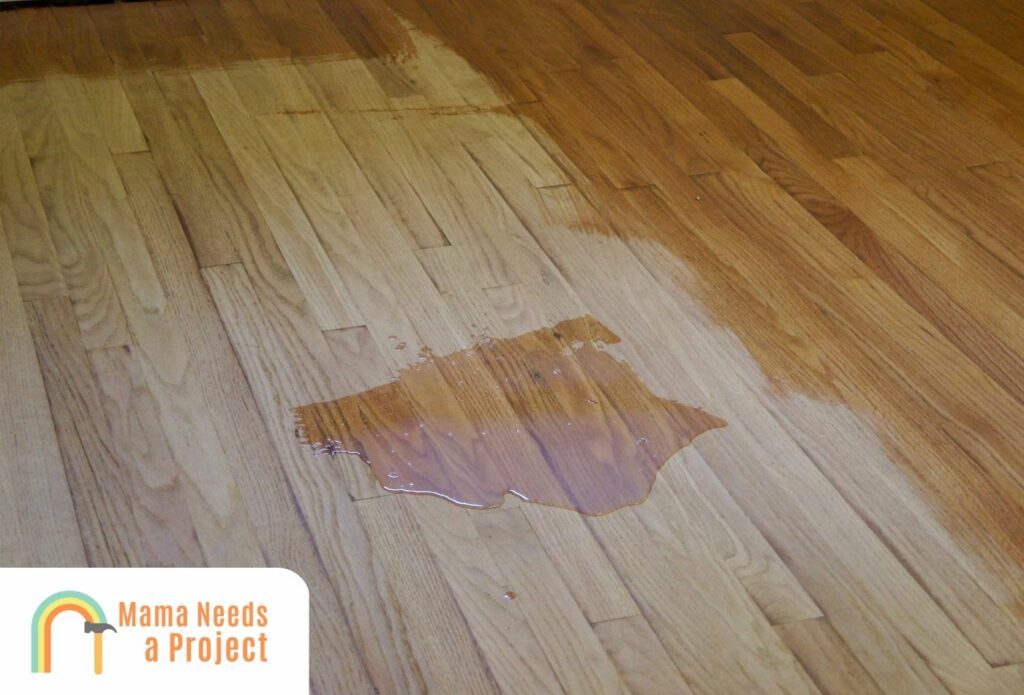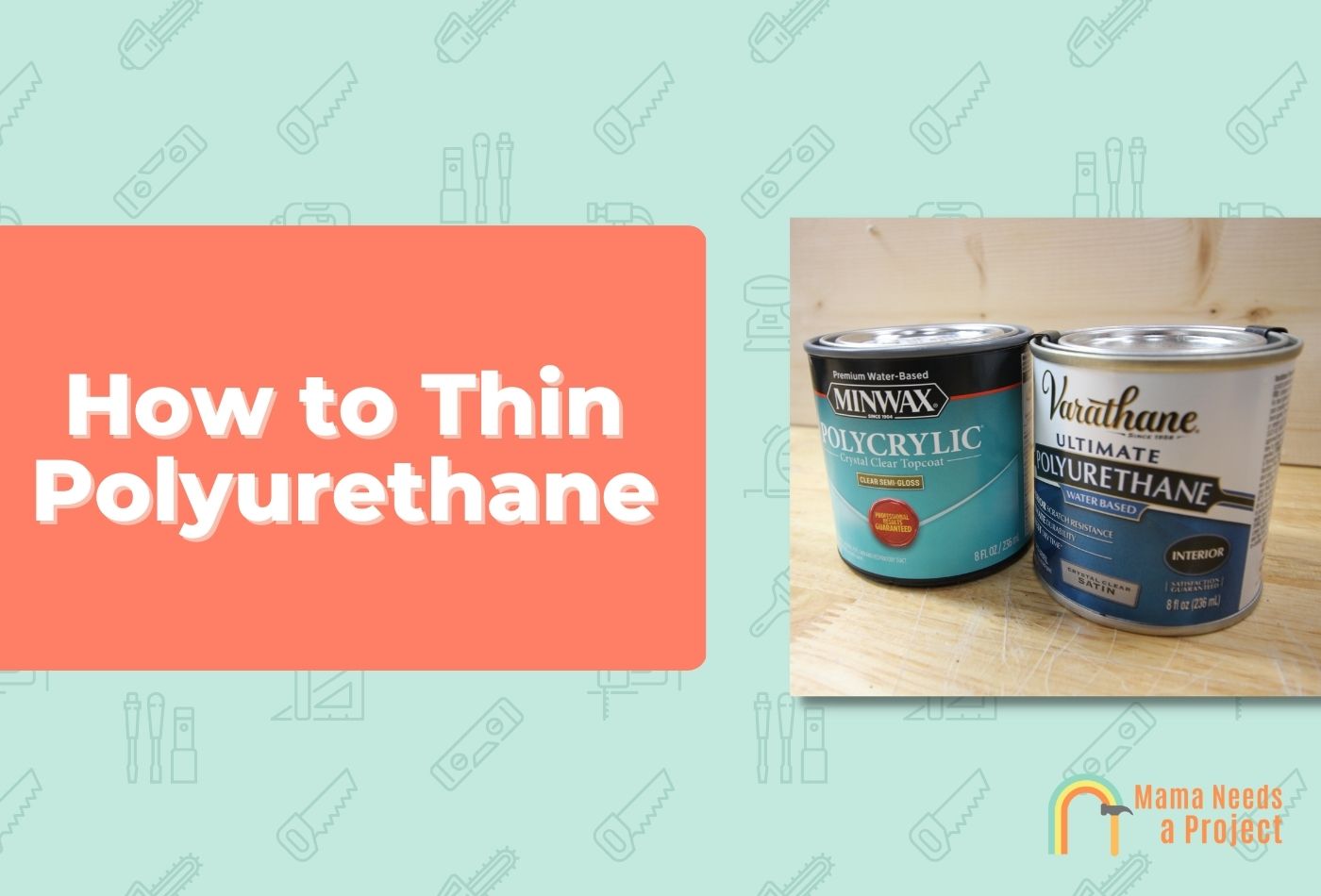How to Thin Polyurethane (For Spraying, Brushing, & Rolling)
Polyurethane is a fantastic finish that’s added to wood surfaces to make them stronger, smoother, and more appealing overall.
But before you apply polyurethane, you’ll probably want to do some thinning, and thinning poly properly will play a big role in determining how it looks after several coats have been applied.
Below, I’ll discuss how to thin polyurethane—specifically oil- and water-based polys—and the reasoning behind why poly thinning is done. Let’s dig in!
To thin oil-based polyurethane, you’ll need to apply mineral spirits, naphtha, or lacquer thinner to it. The mix should be three parts poly, one part solvent. To thin water-based polyurethane, use water or denatured alcohol. Make sure no more than 2% of the mixture is additional solvent.
Why Should You Thin Polyurethane?
Before I show you how to thin polyurethane, you need to understand the importance of it.
The main reason why polyurethane is thinned is because doing so makes it easier to apply, whether you’re brushing, wiping, or spraying it – and it helps reduce air bubbles and other problems during the application process.
When polyurethane is too thick, it’s hard to spread out evenly. When you’re done spreading thick poly, some parts of the surface may have too much poly while other parts have too little.
Plus, polyurethane doesn’t fill cracks and crevices well when it’s thick. And if it can’t fill cracks and crevices well, it’s not going to be a good sealer—which it is if applied properly.
Additionally, since there are a few solvents you can use with oil-based polyurethane, like mineral spirits, it’s not like thinning oil-based poly is challenging because of hard-to-get materials.
And when it comes to diluting water-based polyurethane, all you need is water—what’s more affordable than that?
In short, provided you don’t over-thin your poly, thinning it out will make application easier and ensure it looks uniform, smooth, and visually appealing once fully cured.
How to Thin Polyurethane – Oil Based
Materials Needed
- Oil-based polyurethane
- Solvent, e.g. mineral spirits (paint thinner), lacquer, or naphtha
- Glass jar or plastic container
- Stirring stick
- A few clean cloths
- Polyurethane brush, sprayer, or roller
1. Clean the Glass Jar
You should use a clean glass jar or a clear plastic container so you can watch the polyurethane transform in real time.
I recommend using a brand new glass jar or container. But even if you use something that’s fresh out of the store, you’ll need to give it a good rinse before using it as the receptacle for your mixture.
If you can’t get something brand new, choose a receptacle that you’ve used for mixing before—just make sure you clean it off with warm soapy water first.
Cleaning the receptacle is imperative, as doing so removes dust, caked-on dirt, dried paint particles, and other elements that can cause one of several polyurethane mistakes.
Going over the container with some rubbing alcohol won’t hurt. But if you do use alcohol, make sure you thoroughly rinse and dry the container to ensure there’s no residue when you go to mix; leftover alcohol can negatively affect the mix in a variety of ways.
2. Pour the Polyurethane
How much polyurethane you pour out largely depends on the size of the surface you’ll be applying poly to.
So if it’s a large surface, you’ll need to pour out a decent amount; a smaller surface won’t require a ton of poly.
Let’s say, for example, you’re applying many thin coats to a tabletop, door, or another large wooden surface and you have a quart of polyurethane to work with.
Since there are 32 ounces in a quart, you should pour 24 ounces (3/4 of the can) into your container. Use a measuring cup to ensure precise measurements.
Note: Should your project require a lot of polyurethane, I recommend using a large plastic container over a large glass jar, solely because a larger glass jar is likely to become a hindrance when you’re mixing or applying the polyurethane.
3. Add the Solvent

Now it’s time to add the solvent you chose to the oil-based polyurethane you just poured out.
You can use mineral spirits, paint thinner, or turpentine to thin oil based polyurethane.
Since the final mixture should be 3/4 poly and 1/4 solvent, you’ll need to add eight cups of solvent to the mixing container.
It’s critical that you add the right amount of solvent, otherwise the poly mixture could be too thick or thin. For this reason, use a measuring cup to ensure you add the right amount is critical to thin polyurethane correctly.
4. Stir
Grab your clean stirring stick and stir the mixture for about 10 minutes. Stir in a clockwise motion for a dozen or so rotations, and then switch to a counter-clockwise stirring motion.
You should stir the mixture slowly while applying the same amount of pressure to reach the best results.
If you stir too fast, you’ll needlessly create a lot of air bubbles which can be a problem when you go to apply the oil-based poly later on.
Note: Finding that you’re not meeting a lot of resistance while stirring? This could be a sign that you applied to much of the thinning agent. Adding more oil-based varnish will remedy this situation, but you must add this slowly and carefully to ensure you don’t add too much.
5. Test
Before you apply polyurethane mix to your work surface, you should test it out on a piece of scrap wood or some cardboard to see what its consistency and texture are like.
Give the poly 20 minutes to a half hour to dry. After time has passed, look at and feel the poly to assess it.
If there are barely any bubbles and it doesn’t have a dark amber or yellow tint, then you’ve successfully thinned the oil-based polyurethane.
Note: Should you not like what you see, it’s probably because the poly mix is too thick. Add a little bit more thinner and stir. If the resulting mixture is too thin, add some of the leftover poly, but do so sparingly.
6. Apply the Polyurethane
There are several different ways you can apply polyurethane depending on your project.
If you’re working on a smaller project, I recommend brushing it on. Check out my list of the best brushes for polyurethane for the best result.
If you’re working on a larger project, you might want to consider spraying polyurethane or rolling it on. These will help you get the job done faster than brushing.
Depending on how many polyurethane coats you apply, you should wait for it to dry between coats.
Applying oil based poly can be messy. Check out these ways to get polyurethane off your hands and how to clean your poly brushes.
Do You Need to Thin Oil-Based Poly Before Brushing It On?
Thinning polyurethane isn’t only helpful if you’re spraying it on. You should also thin poly before brushing or wiping it on.
Thinning polyurethane before brushing or wiping will allow you to spread the polyurethane easily, and you won’t have to worry as much about nooks and crannies being overrun by an excessive amount of poly.
If the wood surface you’re applying poly to is entirely flat, you should use a bristle brush to apply the finish.
If the surface is contoured, wipe on the thinned poly with a clean cloth. Following the grain as you wipe will yield the best results.
Should you brush poly onto a surface that’s contoured, rounded, or vertical, you’ll quickly realize that applying poly this way creates a lot of bubbles, so it’s best to use another applicator—like a spray gun—in these instances.
Note: Some wood furnishings, particularly those with many crevices and joints, should have polyurethane sprayed on, as it’s nearly impossible to adequately coat them with polyurethane using just a brush or clean cloth.
How to Thin Polyurethane – Water Based

Materials Needed
- Water-based polyurethane
- Water or denatured alcohol
- Glass jar or plastic container
- Stirring stick
- A few clean cloths
- Brush, roller, or spray gun
1. Clean the Glass Jar
Cleaning out the receptacle that you’ll be mixing the water-based polyurethane and thinner in is important, as you don’t want any particles—like dried paint, stain, wiping varnish, or lacquer thinner—ending up in the polyurethane coating, as these can weaken the finish.
And if you’re spraying polyurethane, leftover particles can clog your sprayer and prevent you from achieving an attractive and smooth polyurethane finish.
2. Pour the Water-Based Poly
Let’s say you’re applying water-based polyurethane to a hardwood floor and you have a quart to work with.
You should pour most of the can into the mixing receptacle; leave about a cup.
To dilute polyurethane that’s water-based, you don’t need a lot of solvent, but more on that later.
When pouring polyurethane, do so slowly and carefully. Try your best to avoid getting the poly on the sides of the receptacle.
Note: Wear gloves, eye protection, and other safety gear when pouring water-based poly, as it may splash back if you pour too much all at once, and getting this varnish on your skin could lead to skin irritation.
3. Add Water or Denatured Alcohol
Thinning water-based polyurethane is different than thinning oil-based poly in a few key ways, but the main one is you don’t need nearly as much thinner with water-based poly.
So if you fill a receptacle with 31 cups of a 32 cup-poly, and then add one cup of water or denatured alcohol, you should get an adequately thinned water-based polyurethane mix.
Adding too much of either solvent will over-thin the polyurethane and maybe even render it useless.
Note: Water and denatured alcohol are the only solvents you should use to thin water-based polyurethane. Other solvents, like mineral spirits, will make the poly too thin, and should you over-thin the poly you won’t be able to add more to fix the problem.
4. Stir
When you have the right balance of water-based polyurethane and thinner, it’s time to stir.
Stir for 10 minutes, keeping a consistent speed and applying the same amount of pressure the whole time; this way you don’t generate too many bubbles from stirring.
You also need to avoid shaking the poly while stirring, as this can lead to bubbles.
Once you start stirring, you’ll realize that stirring water-based poly is a lot easier than stirring oil-based poly (that’s been mixed with mineral spirits or another paint thinner), and that’s because water-based poly isn’t as viscous.
Still, if it feels like you’re just stirring water with your stick, you may have put in too much thinner.
5. Test the Polyurethane
Just like you would test oil-based polyurethane after mixing it with thinner, you need to test water-based polyurethane as well.
The good thing, however, about testing water-based poly is you don’t have to wait a long time to see how it’s going to come out; you’ll only need to wait 10 minutes or so before you have a good idea of how the consistency, texture, and color of the water-based poly will be.
If you’re spraying on vertical surfaces and noticing that the poly is running shortly after you spray it on, this could be a sign that it’s too thin.
6. Apply the Polyurethane Finish

Once you know the poly is going to come out how you want, load it in the spray gun or apply it to your brush and begin coating the surface of your wood.
Tips to Thinning Polyurethane
Work Only in a Well Ventilated Area
Before you thin polyurethane, you need to make sure you’re doing so in a room that has good ventilation.
Polyurethane, especially oil-based polyurethane, emits strong fumes that are highly flammable, and overexposure to these can result in a range of adverse health effects, like irritation of the eyes, nose, and throat, dizziness, nausea, and headaches.
If you choose mineral spirits as your thinner, be aware that this emits fumes too. If the fumes are too strong, use half mineral spirits or a weaker solvent.
Always Apply Thinner Sparingly
To prevent over-thinning, you should always pour polyurethane sparingly. Once you over-thin poly, it’s hard to reverse.
Over-thinning is more likely to occur with water-based polyurethane, though you could run into the same issue when thinning oil-based polyurethane.
I recommend applying a little bit of thinner and then mixing to see what you get. Just make sure you don’t go beyond the cup-based recommendations above, as the likelihood of you over-thinning will go up if you do.
Below are a few tips to applying polyurethane!
FAQs
Can you thin and spray polyurethane?
Yes, you can thin polyurethane for spraying. You could also buy thinned poly that comes in a spray can. Thinning polyurethane before spraying will make application easier overall, provided you were careful to avoid over-thinning.
Can you thin polyurethane with water?
Yes, you can thin water-based poly with water. Just be sure not to use water to thin oil based polyurethane, as this solvent doesn’t work with oil finishes.
Can you thin polyurethane with mineral spirits?
Yes, you can thin oil-based varnish with mineral spirits, as this is an oil-based paint thinner. Thinning poly with mineral spirits is easy, mainly because the two substances mix well.
Should polyurethane be thinned?
Thinning polyurethane isn’t necessary, but a lot of woodworkers do this so the poly is easier to apply. And if you thin properly, you don’t have to worry about the solvent weakening the poly.
Does thinned polyurethane dry faster?
Yes, thinned polyurethane dries quicker than viscous poly. Thinned water-based polyurethane dries fastest, becoming semi-dry in under a half hour.
Final Thoughts on Thinning Polyurethane
How you dilute polyurethane depends in large part on what kind of polyurethane you’re using:
- To thin oil-based polyurethane, you’ll need mineral spirits or another solvent.
- To thin water-based polyurethane, water or another mild solvent will be needed.
Thinning polyurethane, whether we’re talking about oil-based or water-based, makes application easier and speeds up the drying process, provided the poly is thinned and applied properly.

